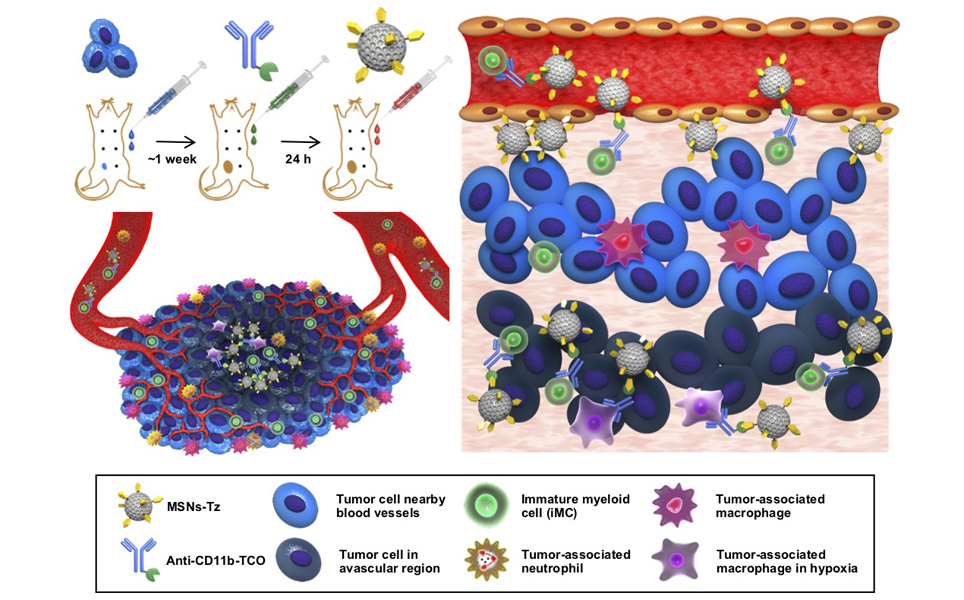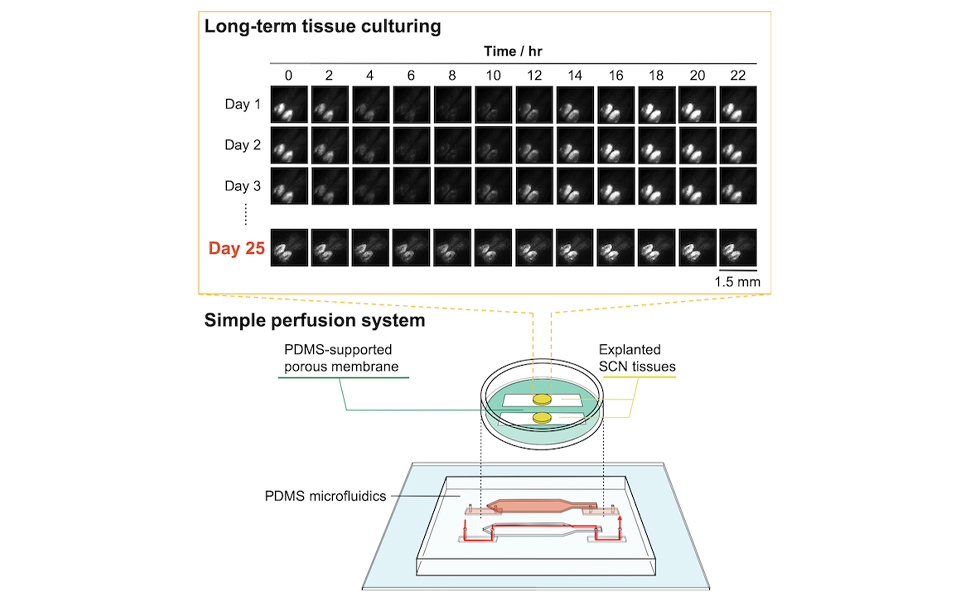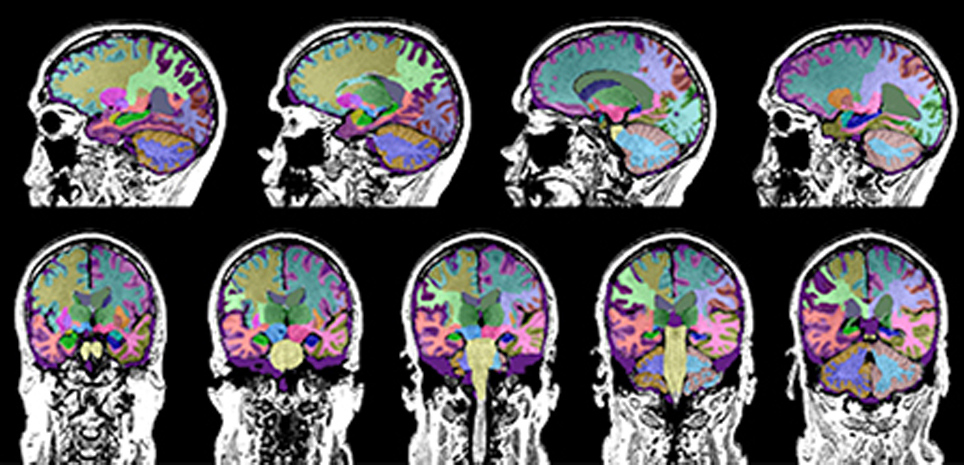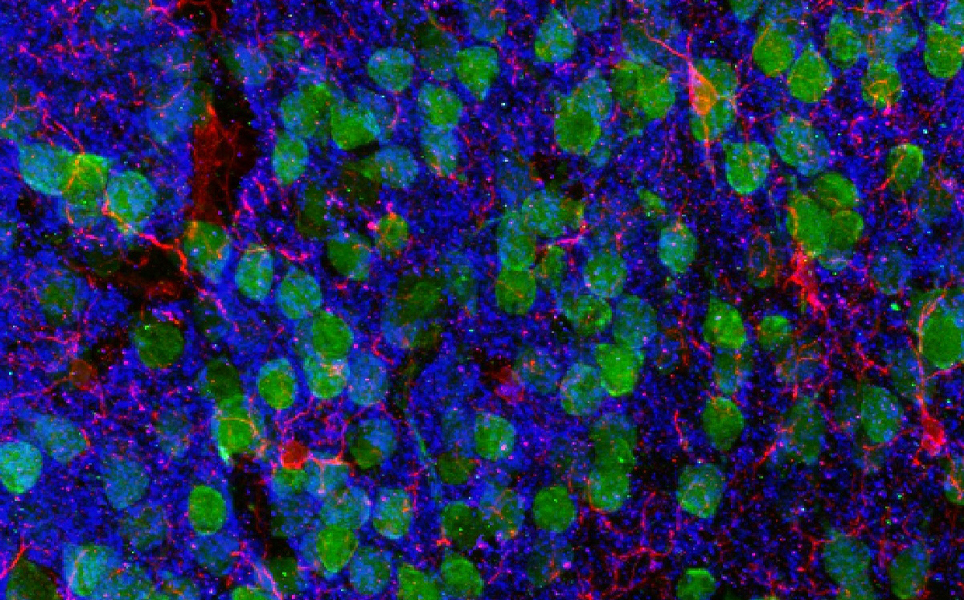
Scientifica's top neuroscience stories from October 2019
Our selection of the top neuroscience research stories from October include the identification of ten new genes that increase a person's likelihood of developing schizophrenia, a new microfluidic system that keeps tissue viable for long-term studies and evidence that deep brain stimulation has an antidepressant effect in patients with treatment-resistant depression.
1. Nanoparticles “click” immune cells to make a deeper penetration into tumours
Scientists at the Institute for Basic Science have developed a new technique to target drug-loaded nanoparticles to tumours.
The researchers used a technique known as click reaction-assisted immune cell targeting (CRAIT). CRAIT utilises two molecular building blocks to form links between immune cells and nanoparticles. This enables drug-loaded nanoparticles to be delivered to a specific location, by utilising the specificity of antibodies.

Learn more about CRAIT
2. Dementia spreads via connected brain networks
Maps of brain connections have been used by scientists at UC San Francisco to predict how atrophy may spread in patients with frontotemporal dementia (FTD).
The research has provided further evidence that loss of brain cells in dementia spreads via synaptic connections between brain networks, sometimes jumping from one part of the brain to another, rather than spreading evenly in all directions.
As well as potentially enabling clinicians to one day predict areas of a patient’s brain that will be affected by dementia, this research could also help better treatments be developed due to the enhanced understanding of how the disease progresses.
Mapping disease progression
3. Drinking to remember: Consuming alcohol leads to epigenetic changes in brain memory centres
Scientists at the University of Pennsylvania have found that when alcohol is consumed, acetate, a byproduct of alcohol breakdown, is released from the liver and travels to the brain, where it promotes addiction memory.
The researchers found that in the learning centres of the brain, acetate binds to proteins that regulate DNA function. This means acetate is able to affect gene expression, and ultimately impact behaviour in the presence of environmental cues to consume alcohol.
This pathway could be a potential future therapeutic target to treat alcoholism and alcohol addiction.
Implicating acetate in alcohol addiction
4. Brain tissue kept alive for weeks on an artificial membrane
Scientists at the RIKEN Center for Biosystems Dynamics Research have developed a new system which uses a microfluidic device to keep tissue viable for long-term studies, once it has been transferred from an animal to a culture medium.
The microfluidic device is composed of polydimethylsiloxane (PDMS) and consists of a semi-permeable channel surrounded by an artificial membrane and solid walls. By enabling the culture medium to circulate in the channel and pass through the permeable membrane, the device prevents tissue from drying out as well as from being damaged due to being immersed in fluid.
In a test of the device, tissue from the mouse suprachiasmatic nucleus was kept alive and functional for more than 25 days. Whereas, the neural activity of tissue kept in conventional culture decreased by 6% after just 10 hours.

Staying alive
5. Researchers glean new insights into biological underpinnings of schizophrenia
Using whole exome sequencing, researchers at the Broad Institute of MIT and Harvard, Massachusetts General Hospital and Harvard Medical School, implicated ten new genes in the development of schizophrenia.
In one of the largest studies yet, the researchers analysed genetic data from more than 125,000 patients. They identified ten genes that, when disrupted, increase a person’s risk of developing schizophrenia. Two of the ten genes code for glutamate receptors, suggesting that dysfunction of these receptors causes symptoms of schizophrenia, making these a potential therapeutic target.
Find out more
6. In a first, patient controls two prosthetic arms with his thoughts
Scientists at Johns Hopkins University’s Applied Physics Laboratory (APL) and School of Medicine have, for the first time, enabled a patient to control two prosthetic arms with his thoughts.
Intracortical microelectrode sensors were implanted in both sides of the brain of the patient, who has quadriplegia. Using real-time mapping of brain activity, the researchers were able to implant the electrodes in regions that control movement and touch sensation. A brain-machine interface was then used to enable the patient to simultaneously control both of the Modular Prosthetic Limbs (MPLs), which are prosthetic limbs with human-like capabilities, including fingertip sensors for force, acceleration, slip and pressure.
The team studied what the patient feels when the hand areas of the brain are stimulated, and showed for the first time that a person is able to feel brain stimulation delivered to both sides of the brain at the same time. Stimulation of both left and right finger areas in the brain could be controlled by physical touch to the fingers of the MPL.
The team are going to continue to train the participant to enable him to interact with the environment as if the MPL was his own limbs.
More here
7. MRI may help doctors differentiate causes of memory loss
A study led by UCLA has found that MRI scans could help doctors identify whether a person’s memory loss is being caused by Alzheimer’s disease or traumatic brain injury.
The researchers used a software programme to analyse MRI scans and found that traumatic brain injury caused the most damage to the ventral diencephalon of the brain, which is associated with learning and emotions, and caused the least amount of atrophy to the hippocampus, which is involved in memory and emotions and is the part of the brain that Alzheimer’s disease affects the most.
Using MRI scans to distinguish traumatic brain injury patients from Alzheimer’s patients could help prevent doctors from misdiagnosing Alzheimer’s disease, helping to ensure the patient receives the most appropriate treatment immediately. As no specialised equipment is required, just the MRI machine and the software, it could be used in any medical centre and hospital.

Distinguishing Alzheimer's and TBI
8. Gut instincts: Researchers discover first clues on how gut health influences brain health
Researchers at Cornell University have, for the first time, described cellular and molecular processes that underlie communication between gut microbes and brain cells.
The team discovered that mice with reduced microbial populations had a significantly reduced ability to learn that a threatening danger was no longer present. By sequencing microglia RNA, the researchers found that altered gene expression in these immune cells influences changes in how brain cells connect during the learning process. It is thought that these changes in microglial gene expression could disrupt synapse pruning and disrupt the formation of new connections that would usually occur during learning.
When the researchers tried to reverse the learning problems in the mice by restoring their gut microbiota, they were only able to rescue learning deficits if they intervened right after birth. This suggests that these signals from gut microbiota are needed early in life.
It is hoped that this research can be used to one day identify therapeutic targets for future treatments.

A link between gut and brain health
9. Teaching rats to drive
Rats have been taught how to drive by scientists at the University of Richmond. The team found that those housed in complex, enriched environments were more capable of learning the task than those housed in standard laboratory cages. This suggests that complex environments lead to more behavioural flexibility and neuroplasticity.

Rats learning to drive
10. Long-term follow-up data shows deep brain stimulation is an effective treatment for treatment-resistant depression
A study by Mount Sinai found that deep brain stimulation (DBS) of the subcallosal cingulate leads to an antidepressant effect in patients with treatment-resistant depression that is sustained over a long period of time.
This long-term study observed patients over eight years. Most patients with treatment-resistant depression experienced a robust and sustained antidepressant response to the DBS, even though these patients are highly susceptible to recurrent depressive episodes.
This study therefore provides promising evidence to support the use of DBS for long-term maintenance of an antidepressant response and relapse prevention.
More about DBS for depression
Take a look at the previous top neuroscience stories...
Sign up to receive our latest news
Find out about Scientifica's latest product releases, company news, and developments through a range of news articles, customer interviews and product demonstration videos.

)